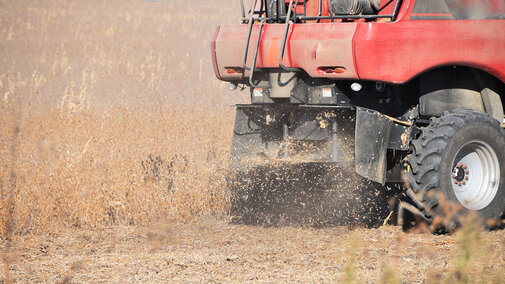Winterizing Alfalfa and GDDs
Allowing for alfalfa to winterize before dormancy is a key factor preventing winter kill across a stand. Traditionally, my recommendation has been to time the last cutting for roughly six weeks before the first frost. At a minimum, plants need three uninterrupted weeks to complete the transfer of carbohydrates to the crown and roots that is the winterization process. The additional three weeks gives us a cushion in case of an early frost.
While this general guideline has proven its worth over the years, many producers would love to have a bit more accurate method to time last cuttings. One way to narrow the no-harvest window down is by utilizing growing degree days (GDD). Researchers at the University of Wisconsin calculated winterkill risk looking at GDD at a base 41°F accumulating until a killing frost of 25°F. They noticed two GDD levels of importance for alfalfa stands — 500 and 200 GDD.
By providing at least 500 base 41°F GDD after harvest, research showed that there was sufficient time for alfalfa to winterize. If harvest occurred with under 200 GDD left, alfalfa plants did now have sufficient time to regrow and deplete carbohydrate reserves to a level that would negatively impact winterization.
While other factors like ground cover and stress of the stand over the course of the year need to factor into the decision for a late cutting, this gives us a more accurate calendar point to shoot for if forage is needed.
A tool like the High Plains RCC CLIMOD can be used to look at past years GDD and decide if we can accumulate 500 GDD or less than 200 GDD going forward. When we are between the two wait to cut, but once chances of surpassing 200 GDD are low and extra hay is needed, it’s probably safe to take that final cutting.
Nightshade in Corn Residue
While droughty areas or corners in cornfields can raise concern about potential nitrates when grazing residue, one might also be aware of any black nightshade in your corn residue that you are grazing or plan to graze? If these fields have too much black nightshade, be careful — it might be toxic.
Black nightshade is common in many corn fields in the fall, especially those that had hail damage in the summer or any situation where the corn canopy became thin or open. It usually isn’t a problem, but if the density of nightshade is very high, there is the potential that it could poison livestock.
Black nightshade plants average about two feet in height and have simple alternating leaves. In the fall, berries are green and become black as the plant matures. All plant parts contain some of the toxin and the concentration increases as plants mature, except in the berries. Freezing temperatures will not reduce the toxicity.
It is very difficult to determine exactly how much black nightshade is risky. Guidelines say that a cow would need to consume three to four pounds of fresh black nightshade to be at risk of being poisoned. These guidelines, though, are considered conservative since there is little data on the actual toxicity of nightshade plants. Also encouraging is that reports of nightshade poisoning have been very scarce in the past.
Fortunately, even though nightshade plants remain green fairly late into the fall, cattle usually don’t appear to seek out nightshade plants to graze. However, green plants of nightshade might become tempting toward the end of a field’s grazing period, when there is less grain, husks or leaves to consume.
Scouting fields to estimate the general density of nightshade plants will help you determine any potential risk. Secondly — and particularly near the end of a field’s grazing period — closely observe what the cattle are eating to see if animals might be selecting nightshade plants.
Soybean Residue Value
Baling of soybean residue after harvest has gained popularity again this fall due to higher hay prices and forage shortages following drought. Further, delayed corn harvests are also slowing stalks residue baling and stalks grazing. According to the USDA AMS Nebraska Direct Hay sales report, large round cornstalks bale values are $110 per ton versus $80 per ton for large round soybean residue bales.
So, the question arises, do soybean residue bale values justify raking and baling costs, reduced soil protection and nutrient removal?
Overall, soybean residue feeding value is less since this forage is not as a palatable as other fall crop residues. Based on research, it is recommended to leave at least two tons of residue in the field to maintain soil organic matter, and even more cover residue may be needed to protect fields from wind and soil erosion. So, soybean residue baling is only recommended on fields where yields were higher than 60 bushels per acre linked with only one ton of soybean forage produced for every 30 bushels of soybean seeds harvested per acre.
For soybean fields with yields higher than 60 bushels per acre, lightly raking and baling a portion of the residue may be justified, especially when forages are in short supply. Our UNL Nebraska Custom Rates guide pegs statewide average baling costs at $16.20 per acre and raking costs at $8.09 per acre. Then, the $55 per ton valuing difference between input costs and market price comes down to placing a final value on nutrients removed and possible soil and water erosion.
More crop residue research information is available on CropWatch and UNL Beef.

